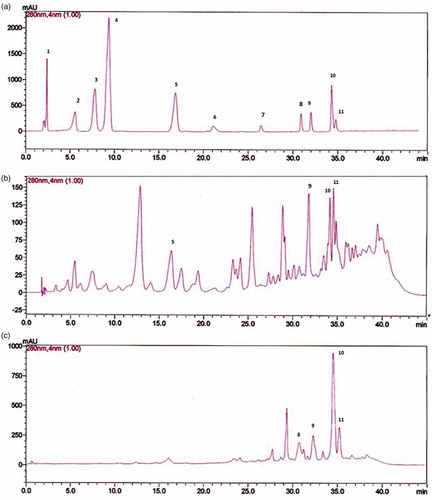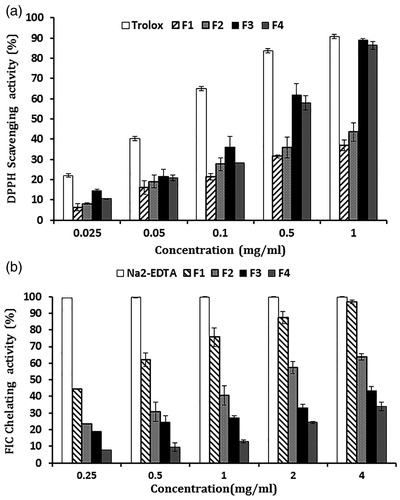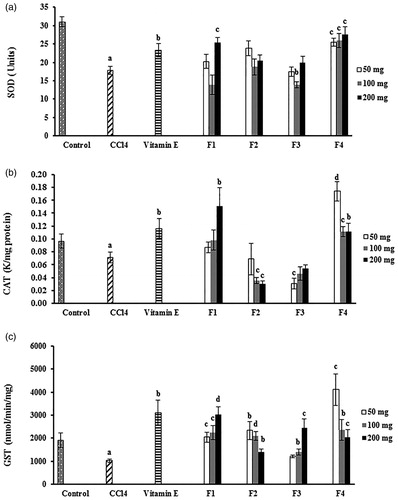Figures & data
Table 1. Main identified components (>0.5%) in the wild carrot oil fractions F1, F2, F3, and F4.
Figure 1. (a) HPLC chromatograms of a standard mixture of phenolic acids. Peaks: 1 = gallic acid; 2 = chlorogenic acid; 3 = vanillic acid; 4 = syringic acid; 5 = caffeic acid; 6 = ellagic acid; 7 = myricetin; 8 = quercetin; 9 = luteolin; 10 = kaempferol; 11 = apigenin. (b and c) HPLC chromatograms of F3 and F4 oil fractions of the wild carrot extract. HPLC conditions: mobile phase, water:acetic acid:methanol; 10:2:88 (solvent A) and water:acetic acid:methanol; 90:2:8 (solvent B), flow rate; 1.5 ml/min, detection; UV at 280 nm.

Table 2. Concentrations of phenolic acids and flavonoids in F3 and F4 fractions of the wild carrot extract.
Table 3. Phenolic content, flavonoid content, DPPH, FRAP, and FIC assay of the different oil fractions of Daucus carota L. ssp. carota.
Figure 2. (a) Percentage DPPH scavenging activity of oil fractions (F1, F2, F3, and F4) and Trolox at different concentrations (25, 50, 100, 500, and 1000 μg/ml) on DPPH radicals. (b) The percentage chelating activity of oil fractions (F1, F2, F3, and F4) and Na2EDTA at different concentrations (0.25, 0.5, 1, 2, and 4 mg/ml) on ferrous ions. Data are presented as mean ± SEM from three experiments.

Figure 3. Effect of wild carrot oil fractions (F1, F2, F3, and F4) and vitamin E on the activity of SOD, CAT, and GST antioxidant liver enzymes of CCl4-intoxicated mice. Each column represents the mean ± SEM, with n = 6 animals in each group. (a) SOD, superoxide dismutase; (b) CAT, catalase; (c) GST, glutathione-S-transferase. ap < 0.05 compared with the normal control group; bp < 0.05; cp < 0.01; dp < 0.001 compared with the CCl4-control treated group.

